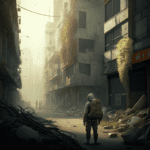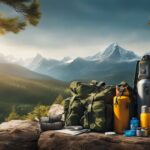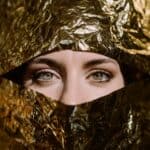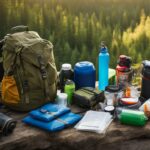Survival
Whistles Can Provide Safety And Be Used For Communication In Almost Every Survival Situation
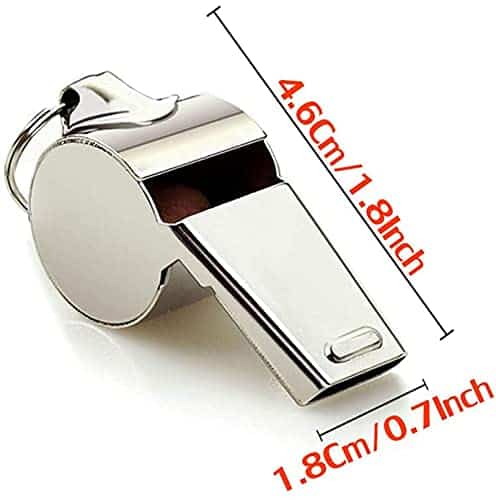
As a survival expert, I am constantly seeking ways to keep myself and those with me safe in any situation. The simple whistle has become one of the most important tools I have found. It is not only easy to carry, but also provides a way to signal for help and communicate no matter where you are or what dangers you face. In this article, I will explain how using whistles can greatly enhance your safety in almost any survival situation.
For those who crave liberation from whatever life throws at them, having an item such as a whistle on hand could make all the difference between being stuck in a dangerous situation or making it out alive. A good quality whistle should easily fit into anyone’s pocket or backpack so they always have it with them when needed. Its loud sound can alert rescuers or let people know their location if lost in unfamiliar terrain; even if there isn’t anyone around to hear it, its noise carries over long distances!
Whistles also offer great potential for use in communication during survival situations – whether it’s sending SOS signals through Morse code or simply letting another person know where you are without speaking directly to them. With just one small tool like this, you don’t need anything else to stay safe while out exploring nature – no matter how unpredictable conditions become!
Benefits Of Whistles In Survival Situations
When it comes to survival, the trusty whistle is a must-have tool. It’s no exaggeration that using this small and powerful device can mean the difference between life and death! Whistles offer an unbeatable level of safety in any wilderness or emergency situation by providing both a warning signal as well as communication capabilities. Whistles should be your go-to for security and peace of mind, whether you’re lost, injured, or just trying to stay safe while exploring wild places.
Whistles are incredibly useful when signaling for help in danger zones where cell phones don’t work. A single blast from a whistle carries further than the human voice – up to over one mile – so they make excellent tools for alerting rescuers who may be out looking for you. In addition, whistling provides a sense of assurance that someone else is nearby and might come to your aid if needed.
Finally, whistles are also great communicative devices among groups such as hikers or campers who have become separated from each other.
By producing three short blasts on their respective whistles, individuals can easily find each other without shouting into the unknown or risk becoming even more disoriented during their search efforts. With all these benefits, modern-day adventurers owe it to themselves to carry at least one type of whistle with them whenever they head out into the backcountry!
Types Of Whistles
Whistles come in a variety of shapes and sizes, each with specific benefits for use in different survival situations. Let’s explore the main types of whistles that are available to you as a survivor.
The first type is a pea whistle, which is small but powerful. It produces a loud sound that carries over long distances and can be used to call out for help or alert others of danger. The pea whistle also has an alarm function, so it can be used as an effective way to ward off wild animals or intruders.
Next we have the fox whistle – this one has two chambers and emits multiple tones when blown into. This makes it ideal for signaling other survivors who may not hear your voice due to distance or environmental noise interference. The fox whistle is also useful for sending complex messages between team members without shouting across large areas.
A referee whistle has been designed specifically for sports referees and umpires, however its high-pitched tone is perfect for emergency signals too! Its shrill tone will easily draw attention from nearby people even if they don’t understand what you’re saying – making it great for drawing quick assistance during time-sensitive disasters such as fires or avalanches.
Finally, there’s the survival whistle – these typically feature three separate chambers which create a unique triple tone sound (think along the lines of Morse code). They are robust enough to withstand extreme weather conditions like snow and rain, plus their volume allows them carry further than most regular whistles – making them well suited for survival scenarios where communication needs to happen quickly over long distances.
Whether you choose one of these classic models or opt for something more modern like an alarm whistle, having some audible device on hand can make all the difference in life-threatening situations. Knowing how each type works and what its strengths are can help determine which one best suits your own individual needs and circumstances.
How To Choose The Most Suitable Whistle
When choosing a whistle for survival, it’s important to select the most suitable type. First and foremost, determine the quality of sound you desire from your whistle. Generally, whistles are constructed out of either metal or plastic which can contribute to their level of loudness. Metal will usually produce a louder noise than plastic; however some plastic designs have been created with superior volume control capabilities. Furthermore, consider the size and shape of the whistle as this could be an influencing factor in what is best suited for your needs.
Next, examine the types of whistles available on the market such as bearing pealess design, dual frequency option and even electronic versions that offer adjustable tones. With these different options come varied styles such as mouth operated whistles or those worn around your neck – all tailored to meet specific requirements when used in survival situations.
Finally, please pay attention to reviews online about each type to get an idea about how others perceive them before making a final selection. By taking into consideration factors like sound quality, size and style along with researching various manufacturers you’ll be able to make an informed decision on which whistle is best suited for your situation. Transitioning seamlessly into signaling techniques…
Signaling Techniques
Signaling is one of the most important survival skills to have in an emergency. Just like a lighthouse beacon guides ships, signaling with a whistle can be used to communicate and attract attention in almost every survival situation.
Using whistles for signal communication goes beyond just sound: it also includes visual and fire-based signals that are easy to use and require minimal resources. Here’s a breakdown of three different types of signal techniques you should know about:
- Emergency Signaling – If there’s someone around who could come help, or if search and rescue teams might find you soon, try using this type of signal. Examples include waving your arms up and down, flashing bright lights from a flashlight or mirror at regular intervals, building smoke signals by starting small fires near highly visible areas (like on top of high ground), etc.
- Visual Signaling – This involves using symbols or items that are easily recognizable by people in the area such as flags, banners or signs made out of brightly colored clothes or materials that contrast against their surroundings. It works especially well when you need to send messages over long distances but don’t want to rely solely on sound alone.
- Sound Signaling – Whistles make perfect tools for sending audible signals over short distances since they’re loud enough even without amplification! You can vary the length of time between blows while making sounds with them too; this helps create unique patterns that can more easily catch the attention of anyone nearby looking for you. Plus, they won’t run out batteries like flashlights would!
The beauty behind whistles is how versatile they are: not only do they provide safety when needed during hikes, camping trips or other outdoor activities—they also make great signaling devices in emergencies!
Knowing how to effectively use whistles for signaling purposes can save time and lives in certain situations where traditional methods may fail altogether due its low visibility range. From here we transition into finding ways to make a fire with a whistle which will further enhance our knowledge base regarding these essential pieces of equipment necessary for any outdoor adventure!
Making A Fire With A Whistle
Making a fire with a whistle is an essential skill for any survival situation. It can be used to make heat and light, boil water, cook food, ward off predators, and signal for help. Knowing how to start a fire using only the resources at hand can save your life in extreme conditions.
The first step in making a whistle fire is gathering tinder to catch sparks easily. Anything from dry grass and leaves to small twigs or bark pieces work well as long as they are very dry and fluffy. Once you have gathered enough tinder, create a platform to place it. This could be anything from two rocks to sticks arranged in such a way so that there’s room underneath them for air flow.
Once your platform is ready, blow the whistle into it while aiming sparks towards your tinder pile. The sound created by the whistle makes it easier to direct the spark exactly where you want it without having to worry about distraction from wind or other environmental factors. After several seconds of blowing into the whistle and directing sparks onto your tinder pile, the spark should catch hold and begin burning steadily if done correctly. If not successful after several attempts, add more fuel gradually until eventually a strong flame appears!
With practice, anyone can learn this valuable skill in order to build their own fire when needed during an outdoor adventure or survival situation. In addition to providing warmth and comfort, being able to make a fire with just one tool like a whistle gives us confidence knowing we can take care of ourselves no matter what comes our way! Now let’s turn our attention towards building shelter with a whistle…
Building A Shelter With A Whistle
Building a shelter with a whistle is an important survival skill. It can be used to construct a safe, durable structure that will protect you from the elements and provide security. Here are some tips for building a shelter using your trusty whistle:
First, select an area where there is enough space for you to build the shelter. Look for natural features like trees or rocks that could provide protection from wind and rain. Ensure there’s ample room above the site so you don’t risk getting hit by falling debris if it rains heavily during construction—you never know when mother nature might surprise you!
Use your whistle to gather materials like branches, leaves, stones, and soil. Start by creating a framework of sturdy sticks and logs—the bigger the better as this will help support the roof and walls of your shelter. Secure these in place with vines or twine if possible.
Once this frame is complete, layering on other materials such as fallen leaves and dirt clumps until you have something resembling walls. To give added strength to your makeshift home use small stones around each corner of the wall frames—these act as anchors which will keep everything in place even when things get rough. Finally, make sure to check all sides of your shelter before settling down inside; listen carefully for any gaps between branches or cracks in the walls so they can be patched up quickly with more material gathered via your trusty whistle!
With a little practice and patience anyone can create their own secure shelter using nothing but their own two hands…and one very helpful whistle! Now let’s take our newfound skills into hunting and fishing – both activities made much easier thanks to our faithful friend: The Whistle!
Hunting And Fishing With A Whistle
Hunting and fishing with a whistle is an invaluable skill for any survivalist. With the right technique, you can get your hands on food sources in almost any environment. Here are some tips to help you become a proficient hunter or fisherman using a whistle:
Technique Benefits Drawbacks Calling Game Can attract animals from long distances; useful if hunting alone No guarantees that game will respond to call; sound may scare away prey instead of attracting it Mimicking Sounds/Distress Calls Useful when trying to lure particular species; makes animal think they’re safe because sound matches their own calls/distress signals Difficult to master; must know specific sounds of target species before attempting this tactic Deterrents/Noise-Makers Can be used as warning signal against predators (including humans); effective way of protecting camp without having to use weapons Must understand behavior patterns of local wildlife; requires preparation time and practice before being able to effectively deter potential threats with noise-makers
Hunting and fishing with a whistle also eliminates the need for traps, bows, and firearms – all major advantages for those who prefer stealthy approaches. It’s important, however, to understand how whistles work and the behaviors of different types of animals so you can maximize your chances of success.
Whether you choose a calling game, mimicking sounds or utilizing deterrents or noise makers – mastering these techniques will make you more efficient at procuring food while staying safe in the wilderness. Making sure that you have enough resources during times of scarcity is essential for self-reliance and survival. Of course, navigating through unknown terrain is just as important when out in the wild, bringing us to our next topic…
Navigation With A Whistle
Did you know that survival whistles can be used for navigation? That’s right, in almost any situation with a map and compass or without one – having a whistle on hand can prove to be invaluable. Whistles are ideal when it comes to navigating, as they allow us to locate landmarks, calculate distances, and even determine directions.
To find our bearings while using a whistle we must first identify the nearest landmark. This is done by listening carefully and making note of the terrain around us; if the land is open and flat then sound will travel much farther than if trees and other obstacles were blocking its way.
Once we have identified the nearest landmark we use our whistle to create an audible bearing line between ourselves and said landmark. We blow into our whistles three times in quick succession at intervals of about five seconds each time – this allows us to hear where exactly the sound comes from so that we may triangulate our position relative to it.
Knowing how far away something is from another point can also help us navigate more efficiently, which is why blowing two short bursts followed by one long blast every few minutes helps keep track of distance covered over time. It’s important not only for orienting oneself but also for understanding how quickly one needs to proceed before reaching their destination safely.
Finally, direction-finding techniques such as taking bearings off various points of reference (such as mountains) or feeling wind direction against your face can further assist with navigation while relying solely on a whistle!
First Aid Treatment With A Whistle
In almost every survival situation, it is essential to have access to first aid treatment. The whistle can be an invaluable tool in providing medical help and emergency care. Not only does the sound of a whistle travel further than other sounds, but it also carries a distinct pattern that can alert others nearby so they know that someone needs assistance.
Using a whistle for first aid can be incredibly beneficial when faced with any injury or illness. In some cases, the loud noise produced by the whistle may even scare away dangerous wildlife or draw attention from people who could provide additional medical aid and advice. In addition, using the whistle as part of your first-aid kit allows you to easily locate yourself if you become disoriented during an emergency situation – this will enable those coming to your rescue to find you faster.
When providing basic first aid with a whistle, it is important to remember that while its loud noise can bring much needed help quickly, there are still limits on what one person can do until proper medical personnel arrive on scene. Be sure to take all necessary precautions and apply appropriate treatments based on your level of training and experience. By taking these steps before professional help arrives, you can ensure the best possible outcome for those affected by whatever life throws their way in survival situations.
Taking proper care of our whistles is key in making sure they continue delivering helpful results when we need them most in times of distress and danger. Proper use and care not only ensures our safety but also helps us get ready for future adventures!
Proper Use And Care Of The Whistle
Using a whistle in survival situations can help keep you safe, while also being able to communicate with others. Knowing your whistle’s proper use and care is essential for its effectiveness. Here are some tips on how to properly use and care for your whistle:
First, it’s important to understand the proper usage of a whistle. When using it outdoors, you blow three short bursts at regular intervals so people know where you are coming from. Additionally, avoid overuse – try not to sound it more than once every 30 seconds or so as this will make it harder for others to locate you. Finally, always check local regulations before sounding your whistle as certain areas may have limits on loud noises.
When it comes to caring for your whistle there are few things you should consider doing regularly. Cleaning your whistle after each use is important since dirt can build up inside and affect the tone quality of the sound. You should also inspect all parts of the whistle prior to each use, checking for any wear and tear that could effect performance. Lastly, store your whistle in a dry place away from extreme temperatures which could damage its construction materials.
Aside from basic maintenance tips like these, remember that whistles require no special tools or replacement parts—just simple cleaning and storage advice! When used correctly they can provide an invaluable tool in helping alert those around you of potential danger or aiding communication in times of need. Take time now to review these guidelines and be prepared if ever put into a situation requiring fast action and clear signaling devices.
Frequently Asked Questions
How Loud Is A Whistle?
Have you ever wondered just how loud is a whistle? Well, I’m here to tell you that the answer isn’t quite as straightforward as you might think. After all, when it comes to whistles and their noise output, there’s more than meets the eye!
Let’s start by exploring what exactly determines a whistle’s sound volume or intensity. Generally speaking, most whistles will have a decibel level between 80-120 dB depending on the type and size of the whistle itself. This range can vary significantly based on factors such as environment (indoors versus outdoors), distance from source of noise, etc.
Additionally, some whistles may be able to produce louder volumes if blown with greater force or technique. To put this into perspective, consider that an average conversation takes place at about 60 dB; thus making these whistles much louder than normal speech levels!
So now we know about whistle volume – but what does this mean for survival situations? In short: having access to a reliable tool like a whistle can prove invaluable in certain scenarios where communication needs to take precedence over other considerations such being heard above background noise levels. It should also be noted that different types of whistles are designed specifically for different purposes – ranging from signaling distress calls to alerting rescuers in case of emergency – making them vital pieces of equipment for anyone who plans on spending extended periods of time outdoors.
Whistles provide us with an incredible amount of utility in our lives; whether used for safety or simply providing a way to send messages across distances quickly and effectively. What’s more is that they do so while taking up very little space and requiring minimal effort – adding yet another layer of convenience and practicality to their already impressive list features!
What Is The Most Effective Way To Use A Whistle For Communication?
When it comes to using a whistle for communication in any survival situation, the most effective way is all about knowing how to make use of sound transmission. Whistles are incredibly loud and can travel long distances, so they’re great tools for sending out alerts or signals that people need help.
One key factor that many don’t think about when utilizing a whistle for communication is pattern recognition. Instead of just blowing into your whistle continuously, which could become too monotonous or even confusing, you should create patterns with short bursts of sound.
For example, if you’re attempting to get someone’s attention from far away, try 3-4 quick blows followed by one longer blast – then repeat this 4-5 times. This will give the person on the other end an easy sequence to recognize and focus in on. Plus it has been proven more effective than continuous sounds alone when trying to grab somebody’s attention over a distance.
By creating recognizable patterns you can also send different types of messages depending on the urgency level being communicated. If you’re setting off an alarm due to danger nearby, having shorter intervals between blasts will let everyone know there’s an immediate need for safety awareness – while slower paced whistling would be used as more of a callout or friendly alerting system; like “Hey I’m here! Where are you?” Understanding these nuances in whistle communication could make all the difference during a critical survival scenario.
Are There Any Special Maintenance Requirements For A Whistle?
Wow! Taking care of your whistle is essential for it to be an effective tool in any survival situation. It’s no exaggeration to say that, without proper maintenance and care requirements, you might as well not have a whistle at all! Let’s take a look at what it takes to preserve whistles and keep them up and running.
When it comes to maintaining your whistle, the most important thing is cleaning. You should clean both the interior and exterior of your whistle regularly with warm water and mild soap or detergent. Make sure to dry the inside thoroughly before reassembling the parts after each use.
Here are some top tips when it comes to preserving your whistle:
- Keep your whistle away from extreme temperatures;
- Regularly inspect for signs of wear and tear;
- Store in a cool, dry place when not in use.
By taking good care of your whistle by following these simple steps, you can ensure that it will work efficiently whenever you need it most – even if there’s chaos around you! So make sure you get into the habit of doing regular inspections and cleaning routines so that you don’t find yourself stranded without this priceless piece of equipment during an emergency situation.
What Is The Best Way To Store A Whistle For Long-Term Use?
Storing a whistle for long-term use is essential if you want it to remain in the best condition. The right storage can help protect your whistle and prevent any damage that could occur over time. As a survival expert, I have some tips on how to store whistles for maximum protection and longevity.
First of all, make sure the whistle is completely dry before storing it away as moisture can cause rust or other forms of corrosion. Make sure to check inside the mouthpiece too! This means drying off with a soft cloth after each use – this will also remove dirt, dust, and debris which can get into the crevices of the metal and cause wear faster than normal.
Whistle maintenance shouldn’t be overlooked either: lubricating the moving parts regularly (especially after wet conditions) will ensure smooth operation when used again later down the line. You should also consider wrapping up your whistle tightly in a protective material such as waxed paper or an old sock – this will provide extra cushioning against knocks or bumps during transportation or storage.
Finally, keep your stored whistle somewhere cool and dry; humidity has been known to take its toll on metal surfaces so try to find a place where temperature fluctuations won’t be an issue. With these simple steps taken care of, you’ll guarantee yourself years of reliable service from your trusty whistle!
Are Whistles Legal To Use In All Areas?
I’m often asked about the legality of using a whistle for safety and communication in various areas. Well, it really depends on where you are, as different regions have their own regulations regarding whistle use. Generally speaking, whistles can be legally used in most places:
- In public spaces: You can usually use a whistle outdoors without any restrictions, such as on a hiking trail or while camping. However, some local governments may have specific noise ordinances that regulate when and where loud noises are allowed in public spaces.
- On private property: Whistles must always be used with permission from the property owner or manager. It is important to know who owns the land before blowing your whistle since doing so without consent could constitute trespassing.
- While hunting/fishing: Many states restrict hunters and anglers from using electronic calls or other artificial means of attracting wildlife. As long as you’re not attempting to call game animals or fish with your whistle, its legal use should be fine; however, double-check your state’s laws prior to using one while out hunting or fishing.
As a survival expert, I understand how invaluable whistles can be during an emergency situation—but it’s essential to stay mindful of local area restrictions before deciding to rely on one! Make sure to check all applicable laws in order to ensure your safety and avoid any potential legal repercussions.
Conclusion
As a survival expert, I can tell you that whistles are an invaluable tool for almost any situation. Their loud sound carries farther than the human voice, and they can be used to signal distress or alert others of danger. With proper maintenance, a whistle will last indefinitely in your emergency kit.
What’s more, did you know that research shows three short blasts is the most recognized international distress call? That means if you ever find yourself in an isolated area with no one around to hear your cries for help, three quick blows on a whistle could save your life!
In conclusion, having a quality whistle handy in all types of situations is essential for safety and communication purposes. Don’t forget this crucial item when packing your bug-out bag! Investing in a good-quality whistle now could mean the difference between getting rescued quickly or spending hours waiting for someone to come along and offer assistance.
Jason is the author of Laienhaft, a blog for all things outdoor and camping. If you’re looking for the best tent to take on your next camping trip, or need some advice on how to get started with recreational camping, Jason has you covered. He’s also an expert on survival skills – if you’re ever lost in the wilderness, he’s the guy you want to find!
Survival
Typical Multi-Tools Are Easy To Carry And Extremely Versatile In Almost Every Survival Situation

Have you ever felt like there just aren’t enough hours in the day? No matter how hard you try, you never seem to have enough resources to face the challenges that come your way? We’ve all been there. That’s why it’s important to be prepared for whatever life throws at you – and that’s where multi-tools come in!
Multi-tools offer a wide variety of features that make them essential items for anyone looking to stay prepared in any situation. Not only are they incredibly easy to carry around with you, but they’re also extremely versatile when it comes to survival situations. From cutting objects to opening cans or bottles, multi-tools can come in handy when the going gets tough.
In this article, we’ll explore what makes multi-tools such an invaluable tool and how they can revolutionize your approach to being ready for any emergency situation. We’ll discuss their various features and uses as well as some tips on choosing the right tool for your needs. So if you’re looking for an item that will give you peace of mind in almost every survival scenario, then look no further than typical multi-tools!
What Is A Multi-Tool?
Picture a pocket-sized toolbox, filled with seemingly endless possibilities for tackling any task or situation. That is what a multi-tool represents – the ultimate survival and EDC tool that can be carried everywhere you go to provide convenience, versatility, and reliability in almost any scenario.
Multi-tools come in various shapes and sizes, from Swiss Army Knives to folding multi-tools with dozens of different tools built into one handle. Regardless of design, all these pocket tools are designed to address everyday challenges quickly and efficiently without carrying multiple individual items.
If you’re looking for an invaluable addition to your collection of gear, then a multi-tool should definitely be on your list. It may not look like much at first glance but it could prove essential during those unexpected moments when you most need it. With its wide range of features and benefits, there’s no doubt that this versatile tool will become a must have item for anyone who wants always to be prepared.
Features And Benefits
Multi-tools are a great addition to any survival kit thanks to their portable design, lightweight construction and multiple functions. They are easy to carry and store, making them ideal for any emergency situation. Plus, they’re made from durable material that can stand up to even the toughest conditions.
Here are some of the features and benefits of having a multi-tool in your survival kit:
- Portable Design: Multi-tools are designed to be small enough to fit into your pocket or pack without taking up much space. This makes them extremely convenient when you need them most!
- Lightweight Construction: The lightweight materials used make it easier to transport and use during an emergency situation. You won’t have to worry about lugging around extra weight with you wherever you go.
- Multiple Functions: A typical multi-tool offers an array of different tools such as pliers, screwdrivers, knives and more – all in one convenient package. With this kind of versatility, you’ll always have what you need on hand no matter what comes your way.
Having a reliable multi-tool by your side is essential for any outdoor adventure or emergency scenario. Its portability and lightweight construction mean it takes up minimal space while providing maximum utility in almost every situation imaginable. And its durable material ensures that it will last through whatever life throws at you. All these factors combine to make multi-tools an invaluable resource in any survival kit!
Types Of Multi-Tools
Multi-tools are like a Swiss Army Knife on steroids. From leatherman tools to pocket knives with multi-function blades, there’s an almost endless variety of options out there for those looking to be prepared in any situation. Whether you’re a weekend hiker or an extreme outdoor enthusiast, having the right tool is essential.
Swiss army knives have been around since the late 1800s and remain popular today due to their versatility and portability. These handy little tools come equipped with multiple functions including scissors, screwdrivers, bottle openers, and more all in one compact package. For those looking for something a bit heavier duty, multitool pliers provide superior strength and durability along with features such as wire cutters and extra knife blades that make them ideal for tackling tough tasks outdoors.
Pocket tools are another excellent option for survivalists who need something small enough to fit in your pocket yet powerful enough to handle any challenge.
While these may not offer quite as many bells and whistles as some of the other multi-tool options available, they can still prove invaluable when tackling DIY projects or repairing items while away from home base. No matter which type you choose, having the right set of multi-tools in your arsenal will ensure that you’re always ready for whatever life throws at you.
Transitioning into the next section about outdoor uses of multifunctional tools: Knowing how to use Multi-Tools effectively can help enhance one’s experience outdoors by providing convenience and efficiency during camping trips or backpacking adventures.
Outdoor Uses Of Multi-Tools
Multi-tools are a must-have item for any outdoor enthusiast. They’re easy to carry, versatile and can be used in almost every survival situation you might encounter while out on the trails. Whether you’re going camping, backpacking or just enjoying some wildlife watching, having a multi-tool with you can help make your experience safer and more enjoyable.
For those planning an extended hiking adventure, a multi-tool will be useful when setting up camp or making repairs along the way. It has all the basic tools like pliers, scissors and knives that can help with tasks like cutting rope or fabricating items from found materials. Plus it offers specialized tools for specific outdoor activities such as bottle openers for fishing trips or screwdrivers for field repairs.
When heading into unknown territory where no one else is around, having a multi-tool provides extra peace of mind knowing that you have access to everything needed in case of an emergency. Having something like this at your disposal gives you the confidence to venture further into nature without worrying about being unprepared if things go wrong. From starting fires to opening cans of food, there’s nothing quite like having the right tool available when its needed most.
Using Multi-Tools In Emergency Situations
It’s a common misconception that multi-tools are only for the well prepared. Yes, it may be true that you won’t find yourself in an emergency situation if you’re not properly prepared; however, this doesn’t mean that having a multi-tool on hand is any less valuable. In fact, there are countless scenarios where these tools can come in handy to help get you out of a jam or make your life easier when things don’t go as planned.
Scenario Multi Tool Use Vehicle Breakdown Cutting & Wrenching Shelter Building Hammer and Knife Fire Starting Flint/Blade Food Preparation Can opener Self Defense Cautionary Strike Device
With their versatile design and lightweight construction, typical multi-tools allow us to carry more than one tool in our pocket or backpack. This means we can be better prepared for whatever survival situations arise during our adventures into the unknown. Whether it’s setting up shelter, starting a fire, cutting through materials, defending ourselves from predators — being equipped with a quality set of tools will provide peace of mind knowing that help is always nearby.
Having the right gear at your disposal goes a long way toward ensuring successful outcomes in challenging times. And while they might seem like small gadgets – multi-tools have proven time and again that they have what it takes to see us through difficult moments without much hassle or worry. From EDC (everyday carry) kits to full blown wilderness excursions – no outdoor enthusiast should ever leave home without them!
How To Choose The Right Multi-Tool For Your Needs
Choosing the right multi-tool for your needs is an important decision. Whether you’re a seasoned outdoorsman or just starting out, several factors must be considered when selecting the perfect tool for your survival needs. It helps to understand some of the features and types available on the market today to make sure you choose the best multi-tool for your situation.
Multi-tools come in many different sizes and styles, each designed with specific uses in mind. Some tools feature blades made from stainless steel while others have pliers that can be used for gripping items like wires. Other popular multitool features include screwdrivers, bottle openers, saws, files, scissors, and multiple blades. The size of these tools varies too – small pocket knives often contain only one blade whereas larger ones might include up to 20 separate implements!
When choosing a multi-tool for your survival kit or bug out bag, think about what kind of tasks you’ll need it for. Do you plan on using it primarily as a knife? Or do you want something more versatile that has all kinds of extra attachments such as pliers or even a mini saw? Knowing how and where you will use your tool will help narrow down your selection so that you get exactly what you need without spending too much money.
No matter which type of multi-tool you decide on, remember that having one handy can give peace of mind in any emergency situation. Properly equipped and maintained, they offer invaluable versatility and convenience – two things no preparedness enthusiast should go without! With this knowledge in tow let’s move onto key safety tips for using a multi-tool.
Key Safety Tips For Using A Multi-Tool
“An ounce of prevention is worth a pound of cure”, and that’s especially true when it comes to using multi-tools. To ensure you’re able to get the most out of your multi-tool without creating any potential safety hazards, here are some key safety tips for safe usage:
- Always read the manual before use and wear protective gear like eye protection and work gloves.
- Keep fingers away from blades or other sharp edges while in use.
- Ensure all tools are properly secured after each use.
It’s also important to be aware of emergencies that could arise while using a multi-tool. When working with larger projects, have someone nearby who can help if needed. In addition, always make sure there is an accessible first aid kit on hand should something unexpected occur. Taking these precautionary safety measures will go a long way towards ensuring safe operation of your multi-tool.
Regular maintenance and care for your multi-tool is essential for keeping it functioning at its best; allowing you to enjoy the convenience, versatility, and security it provides during survival situations.
Maintenance And Care For Your Multi-Tool
Caring for your multi-tool is just as important as using it. To ensure its longevity, follow these maintenance and care tips:
First, pay attention to proper storage. Keep the tool in a dry place with moderate temperature so that rust prevention can be maximized. Additionally, avoid prolonged exposure to direct sunlight or excessive moisture which can damage the tool’s surface.
Second, consider cleaning instructions carefully. Before you start any clean up process, make sure all blades are safely closed and locked into position. Use warm water and mild detergent to remove dirt from the metal parts but do not submerge them underwater because this may cause corrosion. Finish by drying off with a soft cloth before returning it back to its original case or container.
Finally, apply lubrication regularly – especially after each use – to prevent wear and tear on the blade’s hinges and locking mechanisms. A few drops of oil should suffice; however, always avoid electrical components when doing this task! With regular maintenance, your multi-tool will remain useful and dependable no matter what type of situation arises.
With effective care and maintenance techniques now under our belt, let’s take a look at some alternatives to traditional multi-tools available today…
Alternatives To Traditional Multi-Tools
Picture yourself in the middle of a lush forest, birds chirping and animals scurrying around. You have no tools to rely on except your wits and whatever is already in your pocket. What do you do? If you’re prepared, you may have brought along an alternative multi-tool that can help get you out of sticky situations.
A pocket knife is one such tool that can be easily carried and used for various tasks like cutting rope or slicing food. They come in many shapes, sizes, and styles, so there’s something for everyone. A hand saw is also great for easily getting through thick branches or chopping wood. And if you want more versatility from a single item then consider a utility knife that has multiple blades built into it.
For true survivalists, nothing beats the classic Swiss Army Knife; this iconic tool contains everything from tweezers to scissors while conveniently fitting inside your pocket. For those who are looking for a more modern take on the traditional multi-tool, look no further than a paracord bracelet which features dozens of uses including being able to start fires or secure items together when needed most.
No matter what type of alternative multi-tool you choose to carry with you, they all provide essential functions that could make all the difference during an unexpected event outdoors. With these items at your disposal, rest assured knowing that almost any obstacle can be overcome without fear or worry!
Making The Most Of Your Multi-Tool
Now that you have a better understanding of the alternatives to traditional multi-tools, it’s time to look at how you can make the most out of your own versatile tool. Multi-tools are extremely useful in almost every survival situation and there are several ways to maximize their potential. Here is an overview of some tips on making the most of your multi-tool:
Multi-Tool Uses Multi-Tool Benefits Cutting/slicing items Portability & convenience Opening cans & bottles Versatility for multiple tasks Screwdriving/hammering Durability for rugged use
Using your multi-tool in everyday situations will help keep its components sharp and well maintained. Simply store it safely when not in use, cleaning it regularly with mild soap and water if needed. Don’t forget about regular maintenance either – oiling moving parts will help prolong the life of your trusty multi-tool. This ensures that all components are working optimally so you always get the desired results from using them.
The versatility of modern-day multi-tools has made them increasingly popular among hikers, campers, hunters, fishermen, and commuters alike – no matter what activity or task they’re taking on! With this knowledge in mind, don’t be afraid to explore different options before investing in one.
Consider trying out alternatives such as pocket knives or specialty outdoor tools instead. Whichever route you choose, having a reliable multi-tool handy can ensure peace of mind when heading into any adventure!
Frequently Asked Questions
What Is The Average Cost Of A Multi-Tool?
Are you looking for the perfect multi-tool that won’t break your budget? Multi-tools are known for their versatility and convenience, but what about cost? The average price of a multi-tool can vary greatly depending on features, materials, design and more. In this article we will look at different factors that influence the cost of a multi-tool as well as provide an overall range of prices so you can make an informed decision.
When it comes to multi-tool prices, there is no one size fits all answer. It really depends on what type of tool you need and how much money you’re willing to spend.
High-end tools with lots of features will naturally be more expensive than basic models with fewer bells and whistles. Additionally, certain materials used in construction such as stainless steel or titanium, will increase the pricing over aluminum or plastic versions.
You’ll also want to factor in brand reputation when choosing which model is right for you – some companies may charge extra simply because they have established themselves as a reliable name in the industry.
Fortunately, finding a quality multi-tool within your budget should not be too difficult. Prices typically range from $10-$200 USD depending on what features you are looking for. Basic folding tools usually start around $10 while larger pocket knives with various attachments can reach up to $200 or even higher if desired. If possible, try to find reviews from other owners who have purchased specific models so that you can get first hand feedback regarding build quality and performance before making your decision.
No matter which option suits your needs best, having a trusty multi-tool handy can always come in handy whether it’s just for everyday tasks or emergencies! With so many options available on the market today ranging from affordable starter kits to high end professional grade tools, there is sure to be something out there that meets both your requirements and budget perfectly.
Are Multi-Tools Legal To Carry In All States?
When it comes to carrying a multi-tool, legality can be an important factor. Depending on which state you’re in, there may be certain laws and restrictions that apply when it comes to tool legality. It’s critical for individuals who carry these devices to understand the legal implications of doing so.
In this article we will explore:
- Multi-Tool Laws
- Carrying Laws
- State Restrictions
- Tool Legality
- Legal Implications
It is important to remember that while some states allow individuals to legally possess a multi-tool without any restrictions, other states require specific permits or licenses before they are allowed to do so. The best way to stay informed and up-to-date with applicable laws is by checking regularly with your local law enforcement agency or government website regarding individual state regulations and restrictions.
Furthermore, different types of tools may have their own set of rules and regulations – such as switchblades or butterfly knives – so familiarizing yourself with those specific guidelines is also recommended.
The consequences of ignoring these laws can range from minor fines all the way up to jail time depending on the severity of the infraction; therefore staying informed about what’s permissible in your area should always be top priority if you plan on carrying a multi-tool device.
Additionally, even if a particular model isn’t prohibited in one region but is forbidden in another nearby jurisdiction – crossing borders could result in serious legal ramifications, making knowledge of current legislation absolutely essential!
At the end of the day, understanding relevant multi-tool laws and limitations can help ensure peace of mind when travelling between locations – knowing exactly what type (if any) of penalty may await someone caught breaking them ahead of time would certainly be beneficial!
Are There Any Age Restrictions For Using A Multi-Tool?
Doing a bit of research into multi-tools often leads to the question, are there any age restrictions for using one? Well, it’s time to get to the bottom of this.
To start off with, most states do not have an age restriction on owning or carrying a multi-tool; however they may be subject to local laws or regulations. Therefore, it is important to check your local state laws when considering buying and/or carrying a multi-tool. That being said, if you’re under 18 years old, you should always seek permission from a parent or guardian before purchasing one.
When it comes to children using them, it all depends on their maturity level and understanding of how to use the tool in different situations safely. A good rule of thumb is that children should only use a multi-tool under adult supervision at first – like anything else too complex for their skill level.
Once they demonstrate responsible behavior and understand the safety considerations involved with these tools – such as knowing which parts can cause injury – then more independence could be granted in their usage.
So although there aren’t specific age restrictions set out by law regarding using or owning a multi-tool, it’s best practice to ensure children are supervised around these items until they reach an appropriate maturity level and can handle them responsibly and safely themselves.
Are There Any Health Or Safety Risks Associated With Using A Multi-Tool?
I’m sure you are interested in using a multi-tool to make your life easier, but it’s important to understand the potential health and safety risks associated with its usage. Multi-tool safety should not be taken lightly as there can be serious consequences if proper precautions are not followed when operating one of these tools.
Let’s examine the hazards first. Tool injury is a real risk for those who use multi-tools without adequate experience or knowledge of their operation. Sharp blades, saws, files and other features on the tool can cause lacerations and cuts that could lead to infection or even more severe injuries. Additionally, improper handling of certain components such as pliers may result in pinched fingers or hands which would likely require medical attention.
It’s therefore essential that all users take necessary precautionary measures before operating any multi-tool:
- Read through the user manual thoroughly and become familiar with each component;
- Make sure to wear protective gear including eye protection goggles;
- Pay close attention when performing maintenance work on the tool;
- Check for damaged parts or worn out pieces before every use.
To ensure successful outcomes from using a multi-tool, we recommend seeking professional advice from experienced professionals whenever possible. Following this advice will help keep both you and others safe while avoiding potentially hazardous situations caused by improper usage of these versatile tools!
How Easy Is It To Repair A Multi-Tool?
Repairing a multi-tool is something that all users should consider. Knowing the repair cost, time and tools required can help you decide if it’s worth investing in one or not. The repair process itself isn’t too difficult, but having access to the right instructions and materials makes it easier.
When assessing the cost of repairing your multitool, check what parts need replacing. Depending on what needs fixing, new items may be needed such as blade screws, pliers springs, etc. At times like these, getting professional assistance could save you money in the long term. It’s always best to read up on any available repair instruction before attempting anything yourself.
Knowing how much time will be needed for repairs also helps with budgeting. If you don’t want to wait too long for your multi-tool to be fixed, then going professional might be the better option. Of course if you have some DIY experience this could speed up the process significantly – just make sure you use proper safety equipment when handling sharp objects and other potentially hazardous components!
Taking care of minor damages regularly also ensures that your tool lasts longer – every little bit counts when we’re talking about maintenance. With patience and dedication, most people can learn how to properly maintain their multi-tools without needing expert help each time they run into an issue.
Conclusion
In conclusion, a multi-tool is an invaluable tool to have on hand in almost any survival situation. Not only are they easy to carry and extremely versatile, but they generally come with a relatively small price tag too! They’re legal to carry in all states and there aren’t any age restrictions for using them either – making them the perfect tool no matter who you are or where you live.
Plus, when it comes time to repair your multi-tool, many of them can be fixed easily by yourself without having to take it into a shop.
As the adage goes: “It’s better to have it and not need it than need it and not have it.” So ensure you always keep your trusty multi-tool close by; you never know when you might need it!
Jason is the author of Laienhaft, a blog for all things outdoor and camping. If you’re looking for the best tent to take on your next camping trip, or need some advice on how to get started with recreational camping, Jason has you covered. He’s also an expert on survival skills – if you’re ever lost in the wilderness, he’s the guy you want to find!
Survival
Para-Cord Helps Survivalists Get Many Things Done
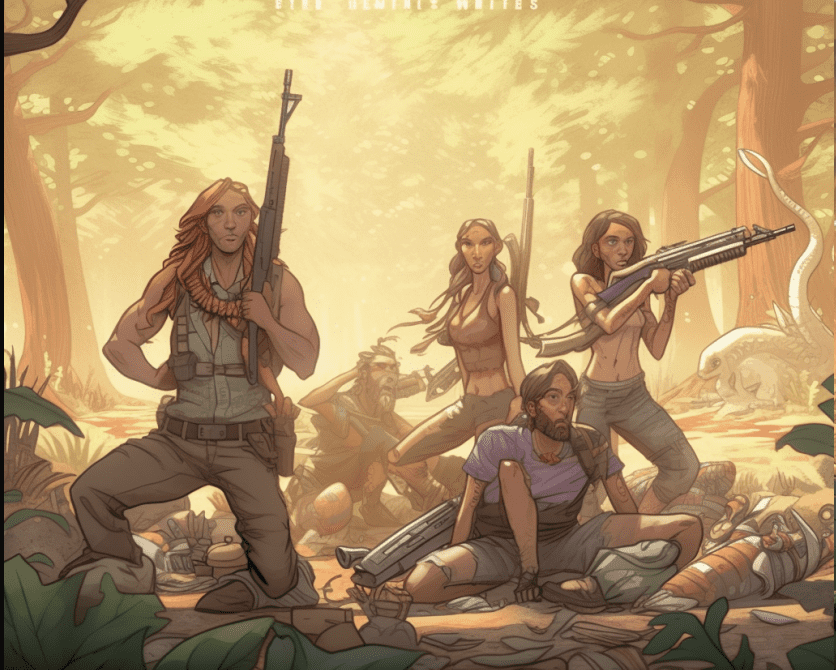
Are you a committed survival enthusiast looking for ways to enhance your preparedness? Para-cord is a perfect solution for almost any situation. In this article, I will explore how para-cord helps survival enthusiasts complete various tasks in different environments and scenarios.
For those unfamiliar with it, para-cord is a lightweight but extremely strong cordage made from nylon strands that savvy outdoorsmen can use in practically any situation imaginable. Its versatility lies in its ability to support up to 550 lbs of tensile strength while remaining incredibly compact and easy to carry. It also has other features, such as water resistance, UV protection, and even fire retardant properties – making it ideal for challenging conditions and unpredictable terrains.
The potential uses of para-cord are endless, ranging from setting traps and snares to building shelters or tying down gear. Whether braving the wilds of nature or readying yourself for disaster scenarios, having a few rolls of para-cord handy could prove invaluable when push comes to shove. So if you’re serious about being ready for whatever life throws at you, grab some quality para-cord today!
Definition
Paracord is an invaluable tool for survivalists. It’s a lightweight yet strong rope made of nylon strands, plaited together to create a cord that can withstand up to 550 pounds in weight. This makes it perfect for any outdoor activity or emergency situation when you need reliable and durable strength. Paracord has many uses and benefits which we’ll explore shortly; but first let’s take a deeper look into what paracord actually means.
The term ‘paracord’ comes from the words ‘parachute cord’, as it was originally used by the military to make parachutes during World War II. Since then, paracord became widely available on the market and its use has expanded beyond the realm of parachuting – making it popular among preppers, campers, hikers, climbers and other outdoors enthusiasts who needed a trusted source of rigidity in their activities.
It’s also known as ‘550 cord’ because of its excellent tensile strength ability to hold up to 550lbs without breaking – making this type of rope incredibly useful in various scenarios where reliability matters most.
Its versatility allows one piece of paracord to be used in multiple applications at once due to its unique construction with seven inner cords surrounded by an outer sheath. Ready to learn more about how this amazing material can help us? Let’s move onto exploring some of its most common uses and benefits…
Uses And Benefits
Paracord is a must-have for any survivalist. Its uses and benefits are invaluable, offering storage convenience, strength durability, and versatile options. Paracords can be used to make snares, secure shelters, create fishing lines, build makeshift bridges – endless possibilities.
The main advantage of paracord is its incredible strength and durability. It’s made from nylon strands that are braided together in a sheath so it won’t fray or unravel even when exposed to extreme weather conditions.
This makes it an ideal material for outdoor activities such as camping and hiking. Plus, since it’s lightweight and compact enough to fit into small pockets or packs, you’ll always have access to the cordage whenever you need it.
And if you’re looking for versatility with your paracord projects, there are many different colors and sizes available on the market today. From neon pink to army green camo prints – whatever your style may be – you’re sure find something that suits your needs perfectly! So don’t hesitate to experiment with different types of cords available; chances are you’ll come up with some truly unique creations!
Types Of Cords Available
When it comes to paracord, there are several types of cordage that survivalists can choose from. Hiking cord is a type of paracord that works great for just about any outdoor activity because of its durability and lightweight design.
The parachute cord is classic, featuring seven inner strands with extra strength and flexibility. Utility cord is ideal for construction projects or repairs due to its high tensile strength, while survival cord offers superior resistance to abrasion and corrosion as well as being resistant to UV radiation.
No matter which type you decide on, each one has its own advantages depending on your needs. Whether you’re looking for increased stability or longer life expectancy, choosing the right paracord will ensure you get the most out of your adventure. Plus, all these options come in various sizes so it’s easy to find something that fits your lifestyle perfectly.
No matter what kind of task you have in mind, having multiple varieties of paracord ensures that you’ll always be prepared no matter where your journey takes you. With so many different types available it may seem overwhelming at first but with a little research and preparation anyone can figure out which one best suits their needs!
How To Choose A Cord
Choosing the right para-cord for survival or camping needs is like choosing a good friend. It should be strong, reliable and have just the right length. This cord will help you in times of need so it’s important to get the selection process right.
Here are some key points to consider when selecting a para-cord:
- Cord Type: Choose from standard nylon cords, parachute cords and shock cords depending on your needs.
- Cord Strength: Select based on tensile strength which varies depending on type and brand.
- Number of Strands: Look for 7 strand option as this provides greater flexibility and stronger hold than 4 strand options.
- Length Needed: Consider how much length is needed for the project at hand – too little could be limiting while too long can add unnecessary weight and bulk.
When making a choice between different types of cords, look closely at the materials used and decide what best suits your requirements and budget. Para-cord selection does not have to be overwhelming if you take time to weigh up each option before making a final decision. Moving forward with confidence in your chosen cord means you’ll soon be ready to determine exactly how much length you need for your project!
Determining Length Needed
Now that you’ve chosen the perfect para-cord for your project, it’s time to determine how much length is needed. This can be a difficult task if you don’t know where to start. Luckily, you can use some simple steps and measurements to calculate the cord required for your project or activity.
Measurement Length (ft) Length (m) 1 foot 12 in 0.3 m 1 yard 3 ft 0.9 m 2 yards 6 ft 1.8 m 3 yards 9 ft 2.7 m
A good rule of thumb when figuring out lengths of paracord is always to add an extra 10%, just in case more is needed later on down the line – this way, you won’t find yourself scrambling for more at the last minute! To get accurate calculations for various projects, measuring tape works best; however, estimations will do just fine if no other tools are available.
For example, one might need 5 feet of para-cord for a lanyard knot, 7 feet for a boa constrictor knot and 8 feet for a monkey fist knot – these numbers may vary depending on each individual’s preference and skill level with knots. As long as you have enough para-cord to complete your desired task without running short, then any measurement should suffice.
The right size paracord length is essential in order to make sure that your project comes together correctly and isn’t too tight or loose while tying different knots. With proper calculating techniques and tips from experts such as using extra cordage in case of mistakes or unintended mishaps, determining the necessary length of paracord becomes easier than ever before!
Armed with knowledge about what type of cord works best along with knowing how much length is needed makes crafting projects with para-cord simpler than ever before!
Crafting Projects With Para-Cord
Did you know that there are over 30,000 different paracord projects and creations? As a survivalist or outdoorsman, the possibilities for crafting with para-cord are endless. From simple knots to intricate weaves, your imagination is the only limit when using paracord in your projects.
I have seen people use paracords for everything from lanyards to hammocks. You can even create useful items like tool holders and fire starters! Some of my favorite ways to use para-cord include making a DIY watchband, fishing line holder, tourniquet, and tent guy lines. With so many uses and applications, it’s no wonder why survivalists rely on para-cord every day.
Paracord has become an essential part of any outdoor kit due to its versatility and durability. Whether you’re just getting started with crafting or looking for new project ideas, I’m sure you’ll find something fun and practical to make out of para-cord. Now let’s look at the necessary tools and supplies needed for creating with this versatile material…
Necessary Tools And Supplies
Regarding para-cord tools, you need the right supplies for any project. Without the right materials and equipment, your projects can quickly become difficult or impossible. Here are some essential items that no survivalist should ever be without:
- Scissors – A good pair of scissors is a must-have when working with para-cord. They will help you cut through the material easily and accurately.
- Clamps – It’s important to secure your work while using clamps so that everything stays in place until you finish tying knots and braiding the cord into whatever shape or form you desire.
- Buckles – Paracord buckles come in all shapes and sizes, making them ideal for fastening onto straps, bags or other accessories.
- Lighters – If you don’t already own one, make sure to get a lighter as soon as possible! This small tool is convenient when heat sealing ends of a paracord after completing a design or knotting technique.
Having these four items on hand before attempting any project with para-cord will ensure success every time! Now let’s move on to tips for working with this versatile material…
Tips For Working With Para-Cord
There are a few handy tips to keep in mind when it comes to using para-cord. Whether you’re an experienced survivalist or just getting started, these techniques will help you get the most out of your para-cord. When it comes to knot tying and cutting techniques, practice makes perfect.
With regular use, you’ll eventually become an expert in working with this essential material. Knowing how to store your para-cord properly is also key for keeping it safe from damage or warping – so make sure that you always keep it out of direct sunlight and away from water sources. And be aware that if stored incorrectly, the fibers can weaken over time.
When handling para-cord, safety should be top of mind as well. Make sure that no matter what type of project you’re working on, all knots are secure and tight before attempting any task or activity involving them. It’s also important to inspect your cords regularly for signs of wear and tear – fraying strands may indicate something needs replacing soon!
Finally, be mindful when cutting the cord – sharp edges can cause injury if not handled carefully. By following these simple tips for working with para-cord, you can ensure that whatever projects you take on will always turn out great!
Safety Considerations
Now that you know the basics of working with para-cord, it’s important to consider safety. Para-cord can be a great tool for survivalists, but it is also essential to practice safe handling when using para-cord. Here are some tips for ensuring your safety while working with para-cord:
First, always make sure to wear gloves when handling cords and ropes. Not only will this help prevent cuts and abrasions from sharp edges, it will also protect against any potential infections or illnesses caused by contact with bacteria on the material. Additionally, wearing eye protection is highly recommended as well in order to avoid any debris or dust entering your eyes.
Second, inspect all of your cordage before use to ensure no frayed edges or weak spots could cause the rope to break under tension. Make sure the paracord is free of knots or tangles as these can weaken its strength too. Lastly, always store extra lengths of para-cord out of reach from children – even if they’re not being used immediately!
Lastly, although most people who work with para-cord rarely experience any mishaps, it’s still important to have an emergency preparedness plan just in case anything should happen.
Being aware of potential hazards associated with para-cords and having a plan ahead of time can greatly reduce risks associated with mishandling them. With proper care and preventive measures taken prior to using the cordage, you’ll find yourself better equipped for whatever adventures life throws at you!
Potential Hazards
Paracord is an important tool for survivalists–it can help them get many things done. But if not used properly, it can also be hazardous. Let’s take a look at some of the potential hazards associated with paracord and how to avoid them:
Hazard Prevention Tips Paracord Burns Wear gloves when handling paracord
Avoid contact with open flames or sparks as they may melt the cord
Do not use paints, dyes or other chemicals that could cause melting or burning of the cordCord Cutting Risk Always handle scissors and knives carefully while cutting paracord
Take extra care when using power tools such as drills and saws on paracord
Use heat-resistant blades in order to prevent burns from hot blades during cutting operationsEye Injury Prevention Do not expose your eyes to flying particles from grinding, cutting or sanding paracord
Wear eye protection when performing any activities involving dangerous equipment such as hammers, saws or drills near paracord
Be sure to securely tie knots so that loose ends do not fly into people’s eyes when untying the knot after completion of work tasksFraying Cord Dangers Do not allow frayed cords to come into contact with skin–they can cause irritation or even cuts depending on their condition
Frayed cords should always be disposed off safely in order to prevent injury caused by entanglement
Tie knots securely before working with frayed cords and check regularly for signs of degradation/deterioration over time.
It’s important for all survivalists who choose to use paracord know these risks and preventive measures. Taking appropriate precautions will ensure you stay safe while reaping the benefits offered by this versatile material!
Frequently Asked Questions
How Much Para-Cord Is Required For A Specific Project?
Figuring out the amount of para-cord required for a project can be tricky, as it depends on what you’re trying to accomplish. Survivalists need to consider how much length is necessary in order to complete their projects safely and efficiently. Knowing the exact para-cord amount needed will help ensure your project succeeds with minimal waste.
When figuring out how much para-cord is needed, start by looking at the project requirements. This includes understanding the size of the item being created and any special uses or features desired. Then measure the circumference and figure out how many times around it needs to go before tying off securely. The final number should give you an approximate idea of the total length required for your project. It’s important to add a bit extra just in case there are any unforeseen difficulties along the way.
Para-cord also comes in handy for all sorts of survivalist projects like camping gear repairs, shelter construction, animal traps, lashing bundles together, and more. A general rule of thumb when working with para-cord is: if it looks too short then double it! Para-cord typically stretches tight over time so adding some additional length from the beginning can save lots of hassle later on down the line.
To sum up, calculating exactly how much para-cord is needed requires careful consideration of each project’s requirements such as its size and purpose, while also considering potential issues that may arise during production. Additionally, having a little extra para-cord readily available can make quick work even of unexpected tasks that come up along the way – ensuring success no matter where your adventures take you!
How Long Does Para-Cord Last?
I’m often asked how long para-cord lasts. It’s a great and important question, especially if you plan on using it in a survival situation. The truth is that the lifespan of your para-cord depends on several factors like quality, environment, and usage. However, with proper storage and care, most types of para-cord can last for years without breaking down or becoming unusable.
The longevity of para-cord varies depending on its construction; some cords are more durable than others based on their composition. Quality nylon para-cords typically have higher durability ratings than cheaper varieties due to better design and materials used in production. As such, investing in good quality cord will help ensure that it has a longer life expectancy. In addition to this, keeping the cord out of extreme temperatures (both hot and cold) will also add to its reliability over time.
For those looking to get the most out of their para-cord investment, regularly inspecting it for signs of wear and tear is advised — checking the strength level after each use can be incredibly beneficial too! Additionally, washing away any dirt or debris between uses is essential as these particles can weaken the fibers over time leading to reduced cord lifespan. All these steps will help keep your parachute cord reliable throughout multiple uses while adding extra security when you need it most!
Ultimately, taking responsible steps towards extending the life of your paracord means being mindful about where you store it and how much stress you put on it when using – doing so should give you plenty of confidence knowing that you’ll always have reliable equipment when needed most!
What Are The Best Ways To Store Para-Cord?
As the old adage goes, “A good plan today is better than a perfect one tomorrow.” When it comes to para-cord storage and organization, planning ahead will give you greater peace of mind in the long run. Whether you’re an experienced survivalist or new to the game, having proper para-cord storage can make all the difference when it matters most.
When storing para-cord there are several key points to consider for optimal safety and effectiveness. Para-cord should be kept out of extreme temperatures and away from any direct sunlight.
It’s also important that you keep your cords organized so they don’t become tangled or knotted together over time. One way to do this is by using containers such as plastic boxes with lids or heavy duty drawstring bags specifically designed for keeping paracords safe and secure. There are even specially made compartments available that come with built-in organizers which help make organizing and maintaining your para-cord much easier.
Some other great ways to store para cord include:
- Winding loose coils around PVC pipes keeps them neat while taking up minimal space and preventing any kinks or knots from developing in your cords over time.
- Carabiners on straps allow you to easily clip multiple strands together quickly and securely while staying organized at all times.
- Wall hooks – Installing wall hooks gives easy access to certain lengths of cord without having to untangle them each time you need them.
No matter what storage method you choose for your para-cord, always remember that prevention is better than cure! Taking measures now could save yourself both money and stress down the line when it really counts! So start putting plans into action today; after all, every little bit helps when preparing for situations in which every second counts!
Is Para-Cord Water-Resistant?
I’m often asked if para-cord is water-resistant and the answer is yes. Paracord is extremely durable, waterproof, and resistant to mold and mildew. This makes it an ideal choice for survivalists who need something that can withstand wet conditions without being easily damaged.
The outer layers of para-cord are made from nylon, giving them a high degree of resistance to water. Nylon is highly resilient, even when exposed to extreme temperatures or moisture. It’s also lightweight so you don’t have to worry about carrying extra weight on your adventures. Additionally, its tensile strength helps ensure that para-cord won’t break under pressure or load-bearing activities like rappelling or climbing trees.
Whether you’re hiking in inclement weather, spending time out on the lake, or camping in damp woodlands, having reliable gear with good water resistance is essential for any survivalist. Para-cord offers superior protection against the elements while still being easy to transport and store away when needed. Its versatility and durability make it an excellent choice for anyone looking for dependable equipment for their next adventure!
What Is The Strongest Type Of Para-Cord Available?
Are you looking for the strongest type of para-cord available? It’s an important question, as it can make a big difference in survival situations. Luckily, several types and ratings of para-cord offer varying levels of strength. Let’s take a look at some of the most popular options out there!
When it comes to paracord strength, mil-spec para-cord is the toughest option around. This type has been tested rigorously by the U.S military and meets their standards for durability and reliability in extreme conditions. Mil-spec para-cord features seven inner strands with a breaking strength of 15 lbs and comes together with an outer sheath that can withstand up to 200 lbs before snapping or tearing.
In addition to mil-spec para-cord, other types and ratings are available on the market today. These include commercial grade, military spec IIa (which is slightly weaker than regular mil-spec), 550 lb rated cord, 750 lb rated cord, 1000 lb rated cord, and even 2000 lb rated cord – all offering various degrees of paracord strength depending on your needs. Each rating is designed differently so be sure to check product descriptions carefully before buying one to ensure it’s right for you!
No matter what kind of para-cord you choose, always remember that having quality equipment is essential when dealing with tough environments or hazardous situations. Choose wisely – get the best gear possible – and stay safe!
Conclusion
As a paracord expert and survivalist, I can confidently say that para-cord is an essential tool for anyone looking to be prepared. Whether you need it for crafting, repairs or even camping, there are many uses for this versatile material.
The amount of cord you’ll need depends on the project, but with proper care and storage it can last quite a long time. Para-cord is also water-resistant which makes it ideal for outdoor activities as well. Lastly, when shopping for para-cord, check out the strength ratings so you know you’re getting the best type available.
In conclusion, having quality para-cord in your supplies could mean the difference between life and death in a survival situation. That’s why I always suggest stocking up on enough good-quality para-cord to handle whatever comes your way.
With proper use and maintenance, these cords should be able to help you get through any emergency or adventure without fail. So don’t forget about this amazing material next time you go outdoors – because, as every experienced prepper knows: being prepared is half the battle!
Jason is the author of Laienhaft, a blog for all things outdoor and camping. If you’re looking for the best tent to take on your next camping trip, or need some advice on how to get started with recreational camping, Jason has you covered. He’s also an expert on survival skills – if you’re ever lost in the wilderness, he’s the guy you want to find!
Survival
Carabiners Can Be Used For Securing Different Things In Almost Every Survival Situation
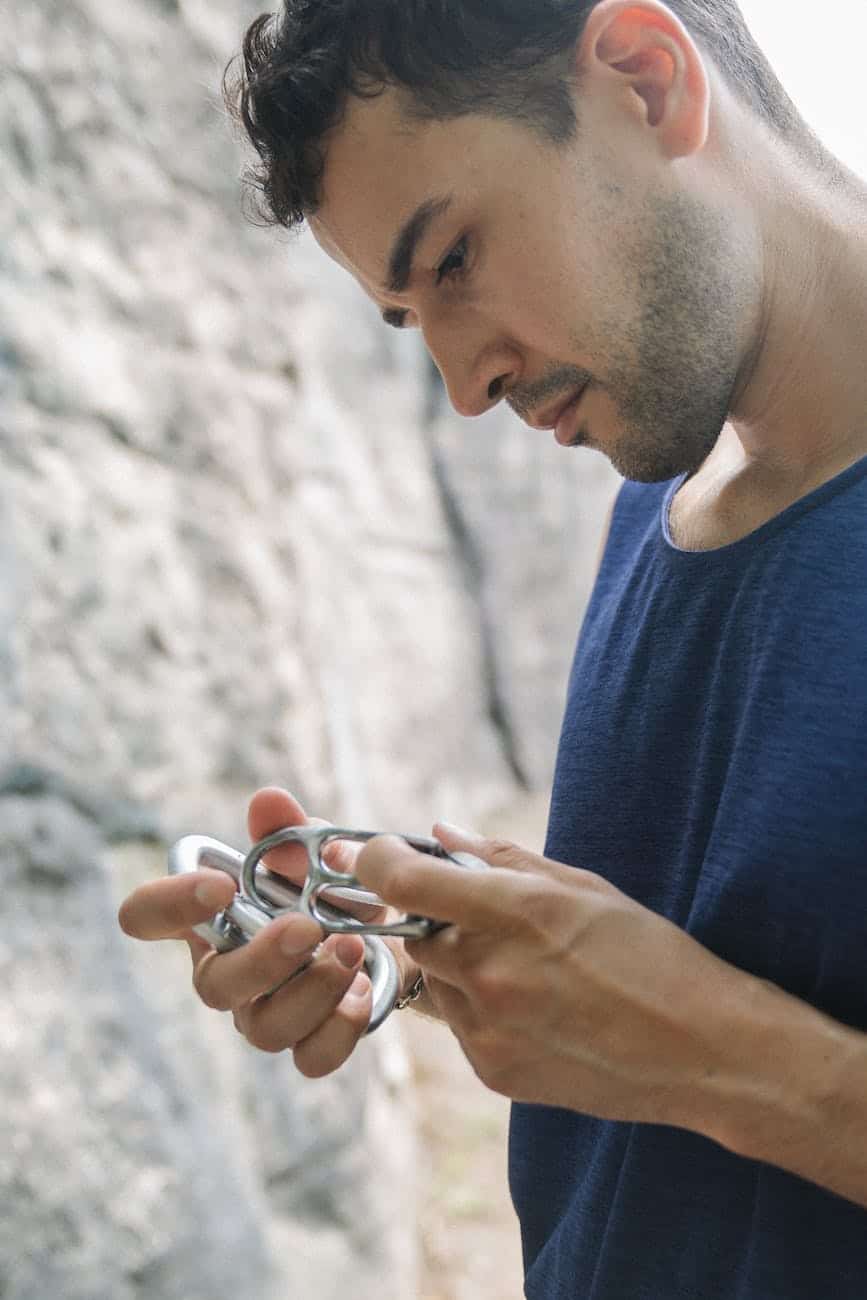
As a survival specialist, I am always on the lookout for ways to ensure my safety and security in any situation. This is why carabiners have become an essential part of my gear – their versatility makes them invaluable for a variety of tasks! In this article, we will explore the many ways in which carabiners can be a lifesaver in all survival situations, from constructing shelters to securing gear or assisting in navigating difficult terrain. With the right skills, these versatile clips can provide you with the peace of mind that you are prepared for whatever may come your way.
With their strong construction and dependable versatility, it’s no wonder carabiners are such popular items among adventurers and outdoorsmen. Not only do they come in handy during emergency situations, but they also provide invaluable security when climbing or traversing dangerous areas. By understanding the basics of carabiner use, you can rest assured knowing that this indispensable tool is ready to serve your needs whenever necessary.
In short: Carabiners are amazing pieces of gear that offer unparalleled support and protection in nearly every survival scenario imaginable. Their portability makes them ideal for carrying on extended trips through rough terrain and challenging climates; plus, their simple design ensures quick setup and reliable performance even under extreme conditions. So don’t let yourself get caught off guard – make sure you know how to utilize these lifesavers effectively before heading into the unknown!
Definition Of A Carabiner
Imagine a mountain climber, hanging off the side of a cliff. His life is in danger and there’s no other way out; that is until he sees something glinting from up above – a carabiner! This small yet powerful piece of hardware has saved many lives by providing secure attachments for climbers to use when ascending or descending cliffs. But what exactly is a carabiner?
A carabiner is a metal loop with one or more spring-loaded gates used as connectors in mountaineering, climbing, caving and rescue operations. It’s an essential component in any survival situation as it can be used to quickly attach items such as ropes, harnesses, buckets, backpacks and even keys to clothes or other objects. The word “carabiner” comes from the German term Karabinerhaken which translates roughly into “spring hook”.
Carabiners are versatile tools because they come in different shapes and sizes that make them suitable for various uses. They provide dependable security during activities like rappelling down steep terrains; however, some types of carabiners should never be used for this purpose due to their design flaws. Knowing how to recognize different types of carabiners will help you stay safe while using them on your next adventure!

Types Of Carabiners
Carabiners are incredibly useful for a variety of survival situations, and they come in many different shapes and sizes. Locking carabiners are made with two gates that can be secured together to ensure items stay attached. Double-action carabiners have an extra locking mechanism so the gate won’t open accidentally. Steel carabiners are heavy duty and often used when a solid connection is needed. Oval-shaped carabiners provide more material to clip things onto than round or D-shaped options, but may not fit into tight spots as well. Lastly, wiregate carabiners offer a lightweight option that’s often easier to manipulate than other types.
With all these choices, you’re sure to find the best type of carabiner for any given situation! Now let’s take a look at some of the benefits of using them.
Benefits Of Using Carabiners
I’m a huge fan of carabiners; they offer me so many benefits in survival situations. They are incredibly strong and can be used for securing items, which gives me an additional layer of safety on top of the strength that I already possess. The versatility is also something to appreciate – there’s almost nothing you can’t secure with these tools!
The advantages don’t end there. Carabiners also make it easier to carry multiple objects at once without having to worry about them slipping away from my hands or falling off. That alone saves me precious time and energy when I am out exploring and traversing different terrains. Not to mention, their lightweight design means I do not have to lug around heavy materials if I want some extra security for my supplies.
Furthermore, carabiners come in various sizes and shapes, allowing me to choose one that best fits my needs depending on the situation. This offers great flexibility during tricky circumstances as well as comfort knowing that whatever I am carrying or connecting will remain safe throughout my journey. With no need for complicated knots either – what more could you ask for?
Their convenience makes them essential equipment in any outdoorsman’s toolkit, no matter where your travels may take you. Moving onto how they attach…
How To Attach Carabiners
Attaching carabiners correctly is key for any successful survival situation. It’s important to make sure that you securely attach the item you are attaching it to and also ensure that your carabiner is attached correctly. This will keep everything safe, secure and in working order so that when you need it most, it won’t fail you.
Here’s how to correctly attach a carabiner:
- Attach the carabiner at an angle so as not to strain the gate or other parts of the carabiner.
- Make sure there aren’t any sharp edges that could damage the rope or webbing while being connected.
- Once both items have been connected, use a figure eight knot with some extra loops through both pieces of webbing or rope to add additional security before closing the gate of the carabiner.
The importance of using carabiners cannot be overstated enough when it comes to surviving outdoors. Carabiners can save lives by allowing us to move freely without worrying about our belongings coming loose or becoming tangled up in one another due to incorrect attachment methods. So remember – if you’re using a carabiner, always properly and securely attach it! With this knowledge, you’ll be able confidently tackle whatever life throws your way during outdoor excursions.
Now that we know how to attach them, let’s look at common uses for carabiners in different survival situations!
Common Uses For Carabiners
Carabiners are one of the most crucial pieces of survival gear out there and they can be used for securing almost anything in any given situation. They’re a must-have for anyone who loves to explore the great outdoors – from climbing gear, hiking equipment and backpacking trips, to mountaineering gear and camping supplies. In fact, I’d go so far as to say that carabiners could save your life if you ever find yourself in an emergency!
To help illustrate the versatility of carabiners, here’s a table showing some common uses:
| Activity | Common Uses For Carabiners |
|---|---|
| Climbing | Securing ropes or harnesses |
| Hiking | Attaching extra items |
| Backpacking Trips | Connecting lines between tents |
| Mountaineering Gear | Fastening tools onto packs |
| Camping Supplies | Hanging lanterns |
Whether you’re rappelling down mountains, traversing icy terrain or just taking a leisurely stroll through nature’s beauty – having carabiners at hand is essential. Not only do they make it easier to carry more items with you on your journey but they also give you peace of mind knowing that everything will remain safe and secure no matter what comes up along the way. Plus, their strong yet lightweight design makes them ideal for packing into tight spots too!
From helping climbers tackle tough ascents to keeping campers organized during extended stays, carabiners have become indispensible when it comes to enjoying outdoor adventures safely and securely. With all these amazing benefits, it’s easy to see why carabiner use has become so popular among adventurers around the world. Now let’s take a look at some safety precautions we should keep in mind when using them…
Safety Precautions For Using Carabiners
When using carabiners in any survival situation, safety should be a top priority. A few simple precautions can go a long way toward mitigating the risk of accidents and injury.
First and foremost, make sure you thoroughly inspect your carabiner prior to use. Look for signs of wear or damage that may compromise its strength and integrity. Additionally, check to ensure all moving parts are functioning properly before relying on them to secure objects.
Next, pay attention to the load limit of each carabiner when securing multiple items together. Failure to do so could result in too much stress being placed on the connection point which can lead to an unexpected failure resulting in serious injury or worse. Carrying extra carabiners is also recommended as they can easily become damaged during regular use due to their small size and lightweight design.
Finally, consider the environment you’re operating in before deciding how best to utilize your carabiners. Different scenarios require different approaches; if there’s a potential for high winds then alternative methods such as knots may be necessary instead of relying solely on carabiners for security purposes. Selecting the right carabiner for the task is key when it comes to achieving maximum safety benefits from these versatile pieces of equipment.
Selecting The Right Carabiner For The Task
Sometimes the right tool for the job is staring you in the face, and it’s just a matter of recognizing its potential. Carabiners can be used to secure items in almost every survival situation. Selecting the right carabiner for a task requires careful consideration of several factors:
-Carabiner type: Different types of carabiners are better suited for certain tasks than others—for instance, D-shaped or pear-shaped locks provide more security than oval shaped options.
-Task selection: A good rule of thumb is to use smaller carabiners to attach lighter objects, such as ropes and cords; and larger ones for heavier items like pack frames and hammocks.
-Carabiner size: Smaller carabiners with less surface area will not put up too much resistance against windy conditions or large rocks, while larger ones offer greater stability and strength when holding heavy loads.
-Carabiner strength: Always choose carabiners that are rated to hold at least twice the weight they’re expected to support; this ensures that there won’t be any surprises during an emergency situation.
Knowing how to select the correct carabiner is essential for anyone who wants to stay safe on their outdoor adventures. With so many different sizes, shapes, strengths, and materials available, choosing one wisely could mean the difference between life and death – it pays off to do your research! Now that we’ve gone through the basics of selecting a carabiner, let’s move on to maintenance and care instructions for keeping your equipment in tip top shape.
Maintenance And Care For A Carabiner
Taking proper care of your carabiner is essential to ensure it’s longevity and safety. Following these maintenance and care instructions can help you extend the life of this important survival tool.
Maintenance Tips Care Instructions Cleaning Inspect for signs of wear or damage regularly Proper Storage Keep away from extreme temperatures, humidity, and salt water Repairs Methods Use a pliers to re-shape bent parts
As an experienced survivalist, I recommend that you clean your carabiner every few months with warm soapy water then dry it off before storing in a cool dry place. It’s also important to inspect the carabiner for any signs of wear or damage such as rust on metal components, fraying rope, loose screws etc., and repair them if necessary. You should also keep your carabiner away from extreme temperatures, high humidity levels, and salty bodies of water which could corrode the metal parts over time. Finally, if something does get damaged or bent out of shape use a pair of pliers to gently reshape the part back into its original form rather than trying to force it back together by hand.
Now that we’ve covered how to properly maintain and take care of your carabiner let’s look at some alternate tools used in place of a carabiner.
Alternate Tools Used In Place Of A Carabiner
In a survival situation, having the right tool for the job can mean the difference between life and death. But sometimes you don’t have access to that perfect tool – like a carabiner – or it isn’t suitable for the task at hand. That’s when knowing about alternate tools comes in handy.
When strapping objects together, rope is one of the most versatile alternatives. It’s strong enough to secure items and has flexible uses such as creating pulleys or being used in combination with other tools like tent stakes. Another option are bungee cords which provide flexibility while also keeping items tightly bound together securely. Paracord is another great choice since it can be unraveled and its individual strands used for different tasks such as fishing line, sewing thread or even dental floss!
But these aren’t your only options; anything from zip ties to duct tape could be employed in order to accomplish what would otherwise require a carabiner. Being resourceful and creative can often help get you out of a jam without needing an expensive piece of gear. With some planning ahead and practice, you’ll be able to handle almost any survival situation thrown at you no matter what equipment you do or don’t have on hand.
Legislation And Regulations On The Use Of Carabiners
Using carabiners in a survival situation requires an understanding of both the regulations and legislation that govern their use. As a survival expert, it is important to be aware of the legislative requirements for carabiner usage, as well as any safety standards or legal repercussions associated with them.
When considering the legislations and regulations surrounding carabiners, there are three main points to keep in mind:
- Regulations: Certain regulatory bodies or agencies may oversee the use of carabiners in specific situations. It is essential to understand what these regulations are so you can ensure compliance when using carabiners.
- Safety Standards: The most up-to-date standards must always be adhered to when using carabiners. This includes checking for any potential product defects before each use. Additionally, knowledge on proper attachment techniques should also be acquired prior to use.
- Legal Repercussions: Depending on where you live, misuse or improper use of carabiners can lead to significant fines or even imprisonment. It’s important to know the laws of your particular jurisdiction regarding the use of this equipment before making any decisions about how they should be utilized.
By taking into account all related regulations, safety standards, and legal repercussions associated with carabiner usage, we can make sure that our utilization is safe and compliant with existing laws—ensuring successful outcomes in every survival situation!
Frequently Asked Questions
What Is The Strongest Type Of Carabiner?
When it comes to finding the strongest type of carabiner for your survival situation, there are a few things to consider. First and foremost is safety. You want to make sure that whatever you use can support the weight of what you’re attaching or securing without breaking or slipping loose. Secondly, you need to determine which kind of carabiner has the strength necessary for your specific needs.
Fortunately, there are several different types of carabiners available on the market today with various levels of strength and durability that can be used in any survival situation. From lightweight aluminum models designed for quickdraws and sport climbing, to heavy-duty steel varieties made for industrial applications such as working at height, there’s something out there for everyone.
The strongest type of carabiner depends entirely on your application – if you’re looking for a secure connection between two objects, then an alloy steel model might be best; whereas if you’re using one just as a pulley point or anchor system, then an aluminum option may suffice. Ultimately, when choosing a carabiner based on its strength rating, always check the manufacturer’s instructions first before making any purchases so that you know exactly how much load each model can safely handle in order to ensure maximum safety during usage.
No matter what type of carabiner you choose, it’s important to keep in mind that they should never be used interchangeably – some are better suited for certain tasks than others, so take the time to do research and understand their strengths and weaknesses before committing to one over another. With this knowledge in hand and proper care taken while handling them, you’ll have no problem finding the right carabiner fit for every survival occasion!
Is It Possible To Use A Carabiner Indoors?
When it comes to survival, having the right tools is essential – and carabiners are no exception. But can they be used indoors? Absolutely! There are many ways a carabiner can help you secure things safely in an indoor environment. Here’s why:
- They don’t weigh much: Carabiners are incredibly lightweight, so they won’t add any extra weight when securing items inside your home or other indoor space. Their slim design makes them easy to transport and store for future use.
- They come in various sizes: Not all carabiners are created equal; some are larger than others depending on what type of item needs to be secured (such as bike locks). This means that you have plenty of options when choosing the best size for your indoor situation.
- They’re versatile: As a survival expert, I know versatility is key – and carabiners provide just that! You can use them to secure almost anything from furniture pieces to doors or windows – making sure whatever is being held in place stays put.
Carabiners offer an incredible way to keep everything safe and sound indoors without breaking a sweat – so if you ever need something secure quickly, look no further than these amazing little devices! From hanging up artwork to keeping supplies organized, carabiners make security simple and stress-free – no matter where you may be situated.
Does The Size Of The Carabiner Affect Its Strength?
The size of a carabiner can definitely affect its strength. It’s important to consider the size for any survival situation, because you don’t want your gear slipping or breaking due to an inadequately sized carabiner. A larger carabiner means more surface area for the load and therefore greater durability. However, using very large carabiners might be too bulky in some cases; it depends on what needs securing and how much weight is involved.
In terms of strength, bigger isn’t always better. If the carabiner is too big, it becomes unwieldy and awkward, making it difficult to use in certain situations. Smaller carabiners are easier to handle but may not hold up as well against heavy loads or prolonged periods of tension. For maximum safety and security, choose a size that’s appropriate for your needs while also having enough capacity to bear the necessary weight or tension without becoming strained over time.
It’s essential during survival scenarios that you have reliable equipment with optimal strength – this includes choosing the right-sized carabineer! Use your judgement when selecting one based on where it will be used and how much stress/load you anticipate needing it to withstand. Remember: proper sizing is key for both ease of use and long-term performance.
Are Carabiners Suitable For Securing Heavy Objects?
Have you ever been in a situation where securing heavy objects is necessary for survival? Carabiners may be the answer. Are they suitable for this purpose? Let’s take a look.
First, let’s consider the strength of carabiners. The size of the carabiner does affect its strength to some degree, but overall it depends more on the material and type of carabiner being used. For instance, an aluminum locking carabiner will generally hold up better than other types when dealing with heavier loads. It can also be helpful to use two or more carabiners together if extra security is needed.
When choosing carabiners for heavy-duty tasks, there are several things to keep in mind. First and foremost, make sure that your chosen model has enough load-bearing capacity to handle whatever object needs to be secured.
Also, check that all components are securely attached and free from any defects before using them; otherwise they could fail under pressure leading to potentially dangerous situations. Finally, ensure that you have adequate knowledge of how to properly attach and secure items with your carabiners so as not to put yourself or anyone else at risk.
In short, carabiners can indeed provide reliable support for securing heavy objects in almost every survival situation—as long as their size, design features, and usage instructions are taken into consideration beforehand.. So don’t forget to bring along some strong carabiners next time you find yourself out in the wild!
Is It Necessary To Use Additional Safety Measures When Using Carabiners?
When it comes to using carabiners, safety should always be the top priority. Carabiners are incredibly useful tools for securing heavy objects and other items in almost every survival situation, but they must always be used carefully. Knowing how to use a carabiner safely is essential to ensure that there are no accidents or injuries. Here’s what you need to know about safety measures when using carabiners:
- Always inspect your carabiner before each use – check for any signs of corrosion, wear and tear, or damage that could compromise its strength 2. Use extra caution when loading a carabiner with multiple items at once 3. Take care not to over-tighten the gate on a locking carabiner 4. Make sure the gate closes securely after each use
As an experienced survival expert, I can tell you first-hand just how important it is to take additional safety precautions when handling carabiners. It’s easy to get complacent and assume that because something looks reliable enough, it doesn’t require further inspection – this kind of attitude often leads to dangerous mistakes being made! Taking the time to properly research different types of carabineers as well as gaining experience in their proper usage will go a long way towards ensuring safe operations in any survival scenario.
In addition, making sure that everyone involved understands all relevant safety guidelines concerning the use of carabineers is also crucial for avoiding costly mishaps or even fatalities down the line. Not only does having basic knowledge about these critical pieces of equipment help keep everyone safe from harm while out in the field; but understanding why certain precautions are necessary can give people greater appreciation for their own freedom and independence by empowering them with confidence in personal security skills!
Conclusion
As a survival expert, I can tell you that carabiners are essential in any situation where securing things is necessary. They come in various shapes and sizes to suit different needs, making them incredibly versatile. The strongest type of carabiner available is the locking gate variety, which provides maximum safety when used outdoors or indoors. Furthermore, size does have an impact on strength so it’s important to choose one with adequate capacity for the weight of your load.
However, it’s always best practice to use additional safety measures such as rope knots or other tensioning devices for heavier objects when using carabiners. This ensures that if something were to fail, another measure of security would be in place. Taking simple steps like these will help ensure success and make sure that you stay safe no matter what kind of survival situation arises.
Ultimately, having the right tools makes all the difference in survival. Carabiners offer a reliable way to secure items quickly and easily while providing peace of mind knowing that everything is safe and secure. With their versatility and strength they are definitely worth investing in!
Jason is the author of Laienhaft, a blog for all things outdoor and camping. If you’re looking for the best tent to take on your next camping trip, or need some advice on how to get started with recreational camping, Jason has you covered. He’s also an expert on survival skills – if you’re ever lost in the wilderness, he’s the guy you want to find!
-

 Beginners Guides1 month ago
Beginners Guides1 month agoLaienhaft Acquires aircooled-tv.com Domain to Add Focus on Aircooled Campervans
-
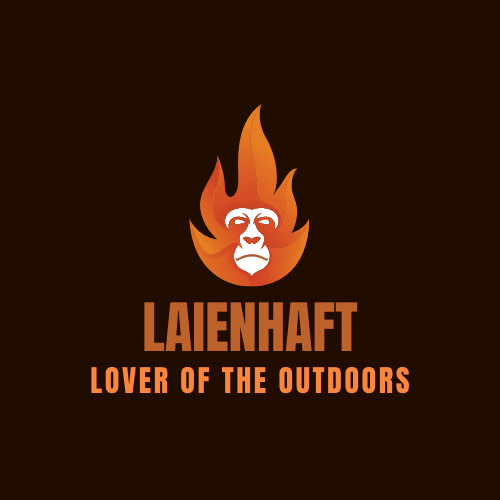
 Backpacker1 month ago
Backpacker1 month agoLaienhaft Acquires Infos-Campings.Com Domain – Our Joined Way Forward to Experience Outdoor, Camping, and Making Friends and Live the Experience
-

 Beginners Guides1 month ago
Beginners Guides1 month agoThe Guide to the Best Camping License Plate Ideas for Cars and RVs
-

 Beginners Guides2 months ago
Beginners Guides2 months agoHow To Build A Slide In Truck Camper
-

 License Plate1 month ago
License Plate1 month agoTop 12 Unique & Funny Camping License Plate Ideas For Your RV, and Camping Van
-

 Beginners Guides1 week ago
Beginners Guides1 week agoHow To Install A Camper Shell
-

 Beginners Guides2 weeks ago
Beginners Guides2 weeks agoHow To Lubricate Pop Up Camper Lift System
-
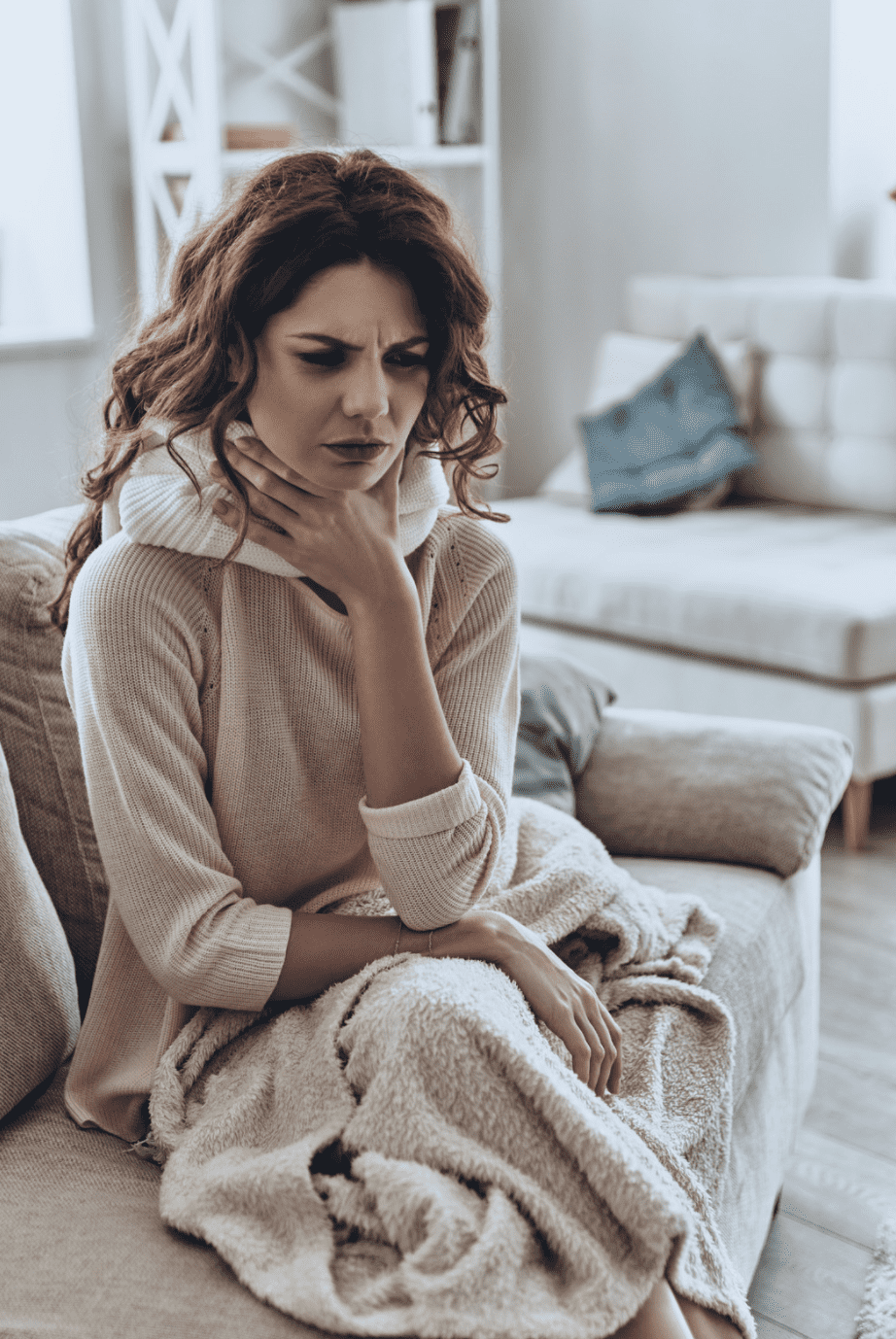
 Beginners Guides1 month ago
Beginners Guides1 month agoWhy Does My Throat Hurt After Camping? The Most Common Reasons and How to Fix Them





